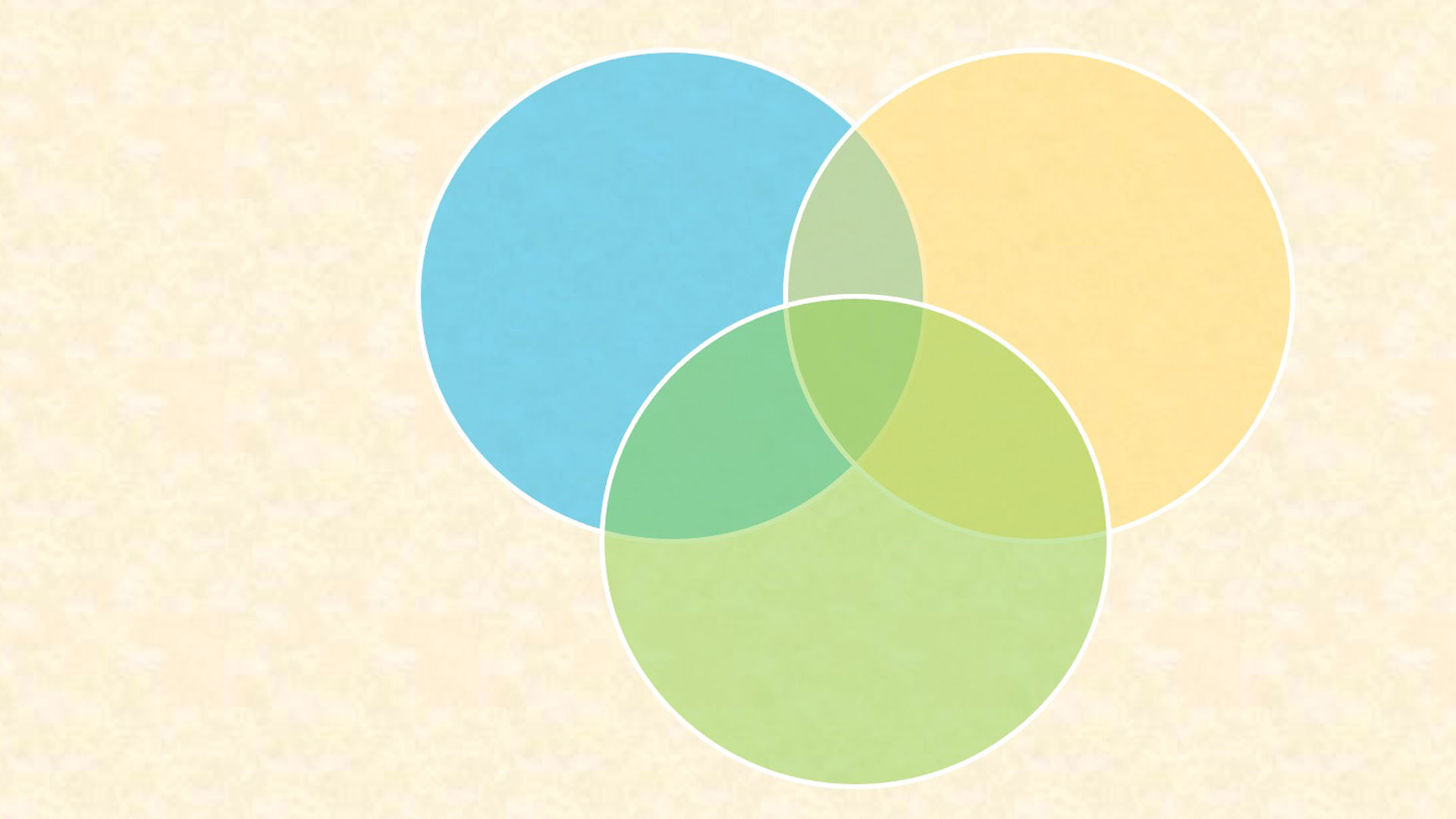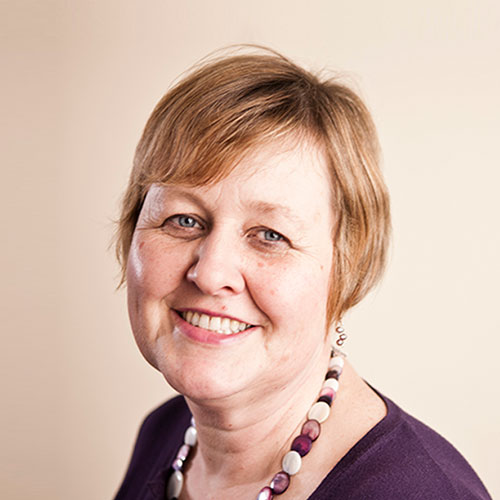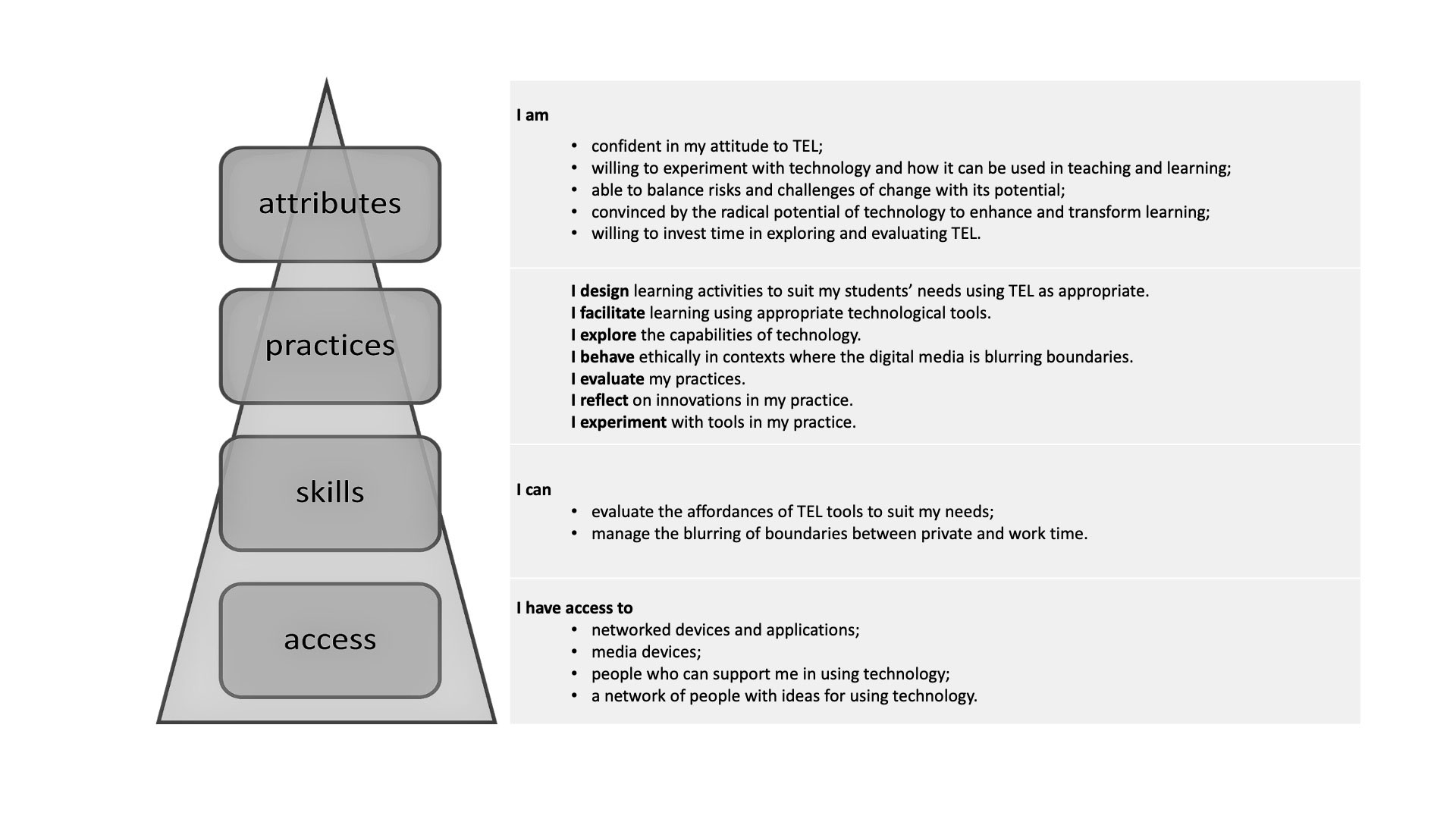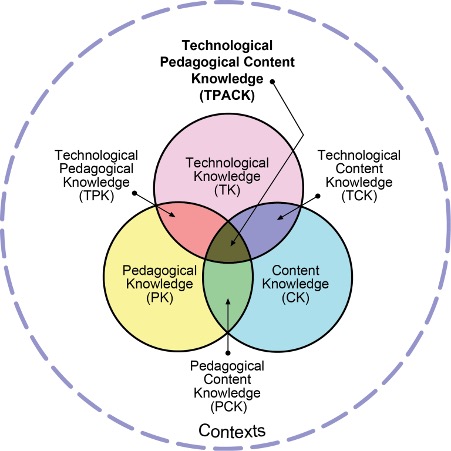
Conceptualising teachers' adoption of digital pedagogy

Dr Liz Bennett
University Teaching Fellow and researcher, HudCRES
The TPACK framework
TPACK stands for technological, pedagogical and content knowledge. It is a framework proposed by Mishra and Koehler (2006) to highlight the additional knowledge that teachers need when making use of digital tools within their teaching.
It is depicted by a Venn diagram consisting of these three types of knowledge, which overlap to make seven discrete sections including the middle - the overlap between the three types of knowledge - which is the ‘sweet spot’ where the teacher should seek to operate. It’s been widely used by teacher educators, practising teachers and researchers, as an explicit mechanism for discussing technological tools that teachers use and has become very popular providing a common language for teacher educators to discuss digital pedagogy.
However questions have been raised as to whether TPACK is fit for purpose. Brantley-Dias and Ertmer (2013) argue that TPACK framework is both too broad and at the same time too narrow:
- too broad in that it lacks specific context, and
- too narrow in terms of focussing on knowledge rather than beliefs and motivations.
In addition, they point out that there is a difference between having a skill or knowledge and using it. There are criticisms of self-reporting questionnaires, in that the respondents may either under report or overestimate their levels of skill and knowledge. Brantley-Dias and Ertmer (2013) point to its difficulty in operationalising a model with seven components. Other critics note that TPACK fails to acknowledge that new pedagogies arise from the use of the digital (Angeli & Valanides, 2009).
A different approach?
In this blog post I propose an approach that might be more suitable for helping conceptualise teachers’ adoption of digital pedagogy.
The model that I’m proposing is drawn from a model of students engagement with digital learning and separates human qualities, attributes, from situated behaviours, practices, from the skills and access on which they depend.
This pyramid model has been adopted by Jisc, the not for profit organisation that promotes the use of digital technology in the further and higher education sectors (Jisc, 2017). It has also been adopted by researchers in the area of academic digital practices (Bennett, 2014; Greener & Wakefield, 2015; Newland & Handley, 2016; Armstrong, 2019). Indeed my own 2012 doctoral study produced a modification of the pyramid in which I identified the particular aspects of lecturers’ attitudes, practices, skills and access that were most evident in those who were the early adopters of digital technology.

This framework has a number of advantages over TPACK model in that it helps to recognise the context in which we are operating by moving the focus away from the individual’s knowledge. Instead it focusses on the beliefs and attitudes and these can be used to acknowledge how the context affects attitudes.
For instance, the framework suggests: “I believe in the potential for radical potential of of technology to enhance and transform learning”, but to this the teacher might also add “I recognise the risks and challenges involved in making changes of the constraints of the syllabus”. Hence this framework is flexible enough to recognise the lived complexity of teachers’ lives.
Another advantage is that the focus is not on the technological, pedagogical and content knowledge, but on what teachers do in their practice. The ways that they “design learning activities to suit my students’ needs using technology enhanced learning, TEL, as appropriate”.
Finally the framework offers a more critical framing of digital pedagogy than TPACK. Although it has a tendency to be technologically deterministic in that it presents a positive view of the potential of technology in learning. For instance, “I am convinced by the radical potential of TEL”, but it also expresses this tentatively as a potential rather than an absolute certainty. In this way it offers a more critical reading of digital augmented learning than the TPACK model.
